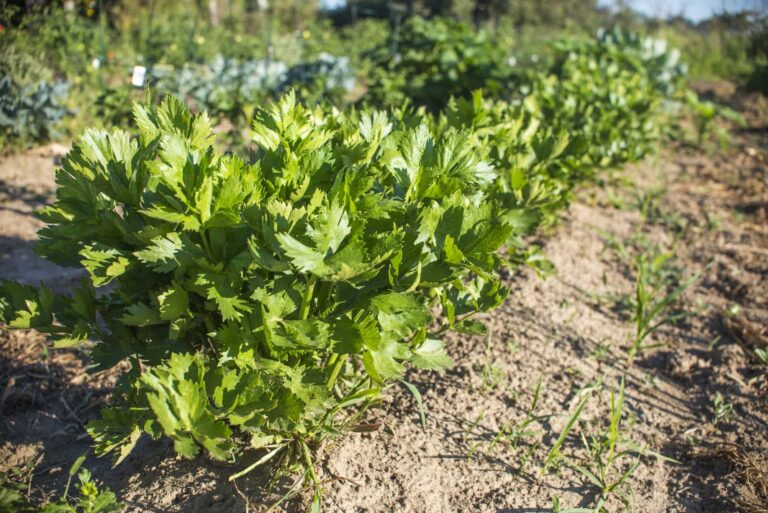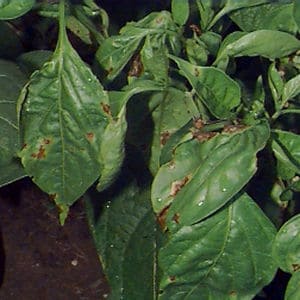Common Asparagus Pests and Diseases and How to Control Them
Asparagus is a hardy perennial, but even the healthiest patch can face challenges from pests and diseases. Over more than 30 years of growing asparagus in my California garden, I’ve seen firsthand how timely care and preventive action keep plants productive for decades. Below are the most common problems, how to identify them early, and the best natural and organic control methods.
Asparagus Beetles
What to Look For:
- Common Asparagus Beetle: Blue-black with yellow spots; adults and larvae chew spears and ferns.
- Spotted Asparagus Beetle: Reddish-orange with black spots; larvae feed inside berries, weakening plants.
Control Tips:
- Handpick daily: Inspect spears in the morning and drop beetles and larvae into soapy water.
- Cut back ferns: Remove dead ferns after frost to destroy overwintering beetles.
- Beneficial insects: Ladybugs and parasitic wasps naturally reduce beetle populations.
Aphids
What to Look For:
Clusters of tiny green or black insects on tender spears and ferns; leaves may curl and turn yellow.
Control Tips:
- Blast aphids off with a strong jet of water.
- Spray insecticidal soap or neem oil if populations persist.
- Encourage lacewings and ladybugs to help keep aphids in check.
Cutworms
What to Look For:
Seedlings or young spears cut off at soil level overnight.
Control Tips:
- Place collars (cardboard or plastic) around young plants.
- Keep beds weed-free to reduce hiding spots.
- Apply diatomaceous earth around crowns as a barrier.
Fusarium Wilt and Crown Rot
What to Look For:
Plants yellow prematurely, spears become thin and weak, roots show reddish-brown discoloration.
Control Tips:
- Plant disease-resistant varieties such as ‘Jersey Knight.’
- Rotate crops; avoid planting asparagus where it has grown before.
- Improve soil drainage and avoid overwatering.
Rust
What to Look For:
Orange-brown pustules on ferns that turn black in late season. Severe infections reduce spear production.
Control Tips:
- Remove and destroy infected ferns in fall.
- Space plants for good air circulation.
- Apply a sulfur-based fungicide if needed.
My Experience and Key Takeaways
I’ve found that prevention is the best strategy. Starting with healthy crowns, keeping beds weed-free, and cutting back ferns every winter dramatically reduce problems. Handpicking beetles and maintaining soil health have kept my asparagus productive for over 20 years in the same bed.
Here are asparagus growing problems and solutions:
Whole plant problems: problem, cause, solution
Yellow to orange to reddish brown or black pustules on stems and leaves
Asparagus rust is a fungus disease. It is most prevalent in humid regions. Spear tops turn yellow and brown and die back. Plant disease-resistant varieties such as Mary Washington and Martha Washington. Cut down diseased ferns at the crown and destroy them.
Plants and leaves are yellow
Overwateing and poor drainage. Allow soil to dry to a depth of 4 inches before watering again. Check soil pH; add lime if the pH is below 6.5.
Leaves are chewed and slimed
Snails and slugs eat leaves. Collect these pests at night. Set beer traps at soil level to attract and drown snails and slugs.
Plants are weak and spindly; few spears
Harvest was too early or too heavy. Plants must be allowed to store food for the next season before they go dormant. Asparagus should be picked the first year it is planted; the second year harvest for two weeks and the next year for 4 weeks. Stop harvesting when spears are thinner than a pencil.
Spear and shoot problems: problem, cause, solution
Spears are crooked, curved, or malformed
Wind can distort spear growth; protect asparagus from prevailing winds. Too close cultivation will cause spears to be malformed: plant at the recommended distance and be careful when weeding.
Spears are brown or discolored and soft
Frost injury occurs when the crop comes up too early in spring. Discard early spears. Protect crops with floating row covers.
Spears weaken, wilt, yellow, turn brown, and die. Roots have reddish streaks
This can be caused by (1) Fusarium wilt, a soilborne fungus. Destroy infected plants. Solarize the soil. Rotate plantings; or (2) root rot fungi: rotate crops; plant resistant varieties such as Mary Washington; plant in a well-drained area.
Soft spots on tips and shoots; spear bend and turn white or light green
Phytophthora crown and spear rot are common in wet seasons. Dig out and destroy infested plants.
Shoot tips are gnawed or channeled
Black stains on shoots. The Asparagus beetle is a blue-black beetle; the larva is a dark green-gray grub to about ⅛-inch (9mm) long. Remove infected shoots. Wash away eggs, beetles, and larvae with water. Keep the garden free of debris. Use rotenone.
Shoots are white or yellow stippled
Spider mites suck plant juices causing stippling. Spray with water or use insecticidal soap or rotenone.
Shoots are eaten near the soil surface
Cutworms are gray grubs in the soil beneath plants. Use cardboard collars around the stem of plants, pushed 1 inch into the soil. Uncover and handpick grubs.
Asparagus growing success tips
Site and soil
Plant asparagus in well-drained soil with a neutral pH. Choose a site in full sun and sheltered from the wind. Be rid of all weeds then loosen the soil to 12 inches deep. Add 1 inch of aged compost across the bed and 1 pound of bonemeal per 20 square feet.
Planting
Plant healthy, disease-resistant crowns, but before you do soak the crowns in compost tea for 20 minutes. This soaking will ensure that the crowns make good contact with their new home from the get-go. Choose a variety that is resistant to asparagus rust and Fusarium wilt. Male plants will yield better than berry-producing female plants. Plant in spring in 6-inch deep furrows setting crowns 18 to 24 inches apart. As the crowns grow fill in the furrow. You’ll be growing stronger plants.
Care
Keep asparagus beds well-weeded; asparagus suffers from weed competition. Hand weed or use pruners to cut away persistent perennial weeds. Don’t allow weeds to shadow your asparagus. Always keep asparagus evenly watered. Cover the asparagus in winter with straw or compost mulch. Remove the protective mulch in early spring to allow spears to grow.
Harvest
Don’t rush your first harvest. Don’t cut spears the year you plant them. The next year, harvest for 2 weeks when spears are pencil thick. The next year harvest for 4 weeks. The next year’s harvest is for 8 weeks. Don’t cut spears thinner than a pencil. For a longer-than-normal harvest: cut spears for just two weeks in spring then allow 2 or 3 spears from a few of the crowns to mature and produce ferns. These plants will slow in their production for a few weeks while the stalks energize the plant through photosynthesis, then the plants will be ready for 10 more weeks of harvest.
Asparagus Growing Hub
Start here: The Ultimate Asparagus Growing Guide: From Seed to Harvest
Planting & Establishment
- How to Grow Asparagus from Seed vs. Crowns: Which Is Best?
- When to Plant Asparagus by USDA Zone
- How to Plant Asparagus
- How to Select the Best Asparagus Plants and Crowns
- Starting Asparagus from Seed Indoors: Step-by-Step Guide
- Direct Sowing Asparagus Seeds Outdoors
- Planting Asparagus Crowns Outdoors: A Beginner’s Guide
- Male vs. Female Asparagus Plants: What’s the Difference?
- How to Transplant Asparagus Without Damaging the Roots
Care & Maintenance
- The Best Companion Plants for Asparagus and What to Avoid
- How to Water Asparagus for Healthy Growth
- Fertilizing Asparagus: Feeding Tips for Bigger Harvests
- Seasonal Asparagus Care: Spring, Summer, and Fall Tasks
- How to Blanch Asparagus for White Spears
- How to Protect Asparagus from Winter Cold
Pests & Diseases
Harvest & Storage
- When and How to Start Harvesting Asparagus Spears
- How to Harvest and Store Asparagus
- Asparagus Harvest Schedule: Year-by-Year Guide
- How to Harvest Asparagus Twice a Year
Kitchen & Varieties
- Seven Ways to Cook and Serve Asparagus
- How to Cook Asparagus with No Recipe
- Canning the Asparagus Harvest
- Top Asparagus Varieties to Grow in Your Garden
Asparagus articles at Harvest to Table:
How to Harvest and Store Asparagus
Seven Ways to Cook and Serve Asparagus
How to Cook Asparagus with No Recipe
Asparagus Growing Problems Troubleshooting
Asparagus Beetle Organic Pest Control
Related articles:
Vegetable Garden Diseases Problem Solver
Vegetable Garden Organic Weed Control
Garden Planning Books at Amazon:






